The paranoid schizophrenia is the most common subtype of schizophrenia. The disease is characterized by various complaints such as paranoia, visual and acoustic hallucinations. This is where the alternative term "paranoid-hallucinatory schizophrenia" comes from.
What is paranoid schizophrenia?

© TeamDaf - stock.adobe.com
Schizophrenia has a multifaceted appearance and is one of the so-called endogenous psychoses. These are clinical pictures that are associated, among other things, with a loss of reality as well as disturbances in thinking and the world of emotions and which arise from a multitude of internal factors.
Schizophrenia is not, as is often wrongly assumed, a split in personality. It is also not related to a reduced intelligence, but rather to errors in the perception and interpretation of the environment. About 25 out of 10,000 Germans have schizophrenia.
Women and men are equally affected, but in the latter the disease breaks out earlier on average. About half of all suffering patients show symptoms of one in the course of the disease paranoid schizophrenia. This type often only develops in middle-aged people and thus later than other schizophrenic diseases.
Paranoid schizophrenia focuses on disorders of the ego-consciousness, hallucinations and above all delusions, from which the name is derived.
causes
It is not possible to pinpoint a single cause of paranoid schizophrenia, but there are various risk factors that favor the onset of the disease. At the biochemical level, the messenger substances in the brain (neurotransmitters) are of great importance. Scientists suspect that an impaired dopamine metabolism is related to schizophrenia.
This is supported by experience with amphetamines, which promote the release of dopamine and intensify symptoms. Serotonin is also suspected of influencing the course of the disease. The messenger has an effect on the sensation of pain, memory and happiness. Overactivity of individual nerve tracts can lead to the increased release of these neurotransmitters.
It also defines some psychosocial risk factors that can trigger the onset of paranoid schizophrenia. If there is a certain genetic predisposition, psychological stress has particularly strong effects in some people. Critical and traumatic experiences, especially in early childhood, represent an increased risk.
The same applies to a stressful social environment or an existing depression. In addition, schizophrenic illnesses rarely occur as a result of infections from which the mother of the person concerned suffered during pregnancy. These include above all Lyme disease and Herpes simplex. Other possible somatic causes are lactose intolerance, celiac disease and pre- or postnatal hypoxia.
Symptoms, ailments & signs
Paranoid schizophrenia has three main symptoms: delusion, ego disorders and hallucinations. The delusion expresses itself through a very strong conviction that is incomprehensible to healthy people, for example that they are being monitored or persecuted.
The patient is mostly in a state of paranoia in which he believes that all external events and people are closely related to him. He interprets everyday events as signs or hidden messages and cannot deviate from these thoughts. Related to this is the disorder of the ego.
The patient experiences problems of demarcation between the ego experience and the environment and is no longer able to view things rationally from the outside. This is accompanied by disorders such as deprivation of thoughts, derealization and depersonalization. Hallucinations usually occur on an acoustic level; over 80 percent of all paranoid schizophrenia sufferers report such symptoms.
They hear voices giving them orders, insulting them, or conveying paranoid thoughts. This can lead to the victim feeling compelled to act self-harming or aggressive towards others.
Diagnosis & course of disease
The first and most important step in the diagnosis is a conversation between doctor and patient, in which the occurring psychotic signs are questioned. Various criteria regarding the type and duration of symptoms must be met in order to diagnose the disease. Symptoms such as acoustic hallucinations or paranoid thoughts that persist for at least a month make schizophrenia likely.
Further critical signs are a reduced sensitivity to feelings (flattening of affect), distracted thought patterns and language disorders. The interview is followed by an extensive neurological and physical examination. This is to rule out other diseases such as epilepsy, brain tumors, infections of the brain or traumatic brain injuries.
It's also important to rule out hallucinations and delusions that occur as a result of substance abuse such as LSD, cannabis, ecstasy, cocaine, or alcohol. If negative symptoms such as lack of drive and poor language predominate, it must be ensured that these are not part of the depression. Other mental disorders such as bipolar illness, autism, obsessive-compulsive disorder and [[personality disorder] 9s must also be distinguished.
Complications
Paranoid schizophrenia is usually associated with delusions and hallucinations. Those affected develop a downright paranoia, feel constantly under surveillance, believe that other people are monitoring them and want to harm them. They are overly suspicious and believe that they are under surveillance and bugged even in their own home.
Some fall into the delusion that normal everyday events want to convey hidden messages to them. When people talk to each other, they feel like they are talking about them. Hallucinations are also not uncommon. Paranoid schizophrenics hear voices, smell smells, and see things that don't really exist. This can go so far that they feel that voices are giving them orders.
In addition, they are often internally restless, quarrelsome and even angry or even violent when they suspect a threat. In this state, they are no longer accessible to reasonable arguments and it is advisable to call the emergency doctor so that the person concerned does not harm himself or others. Sometimes, against the will of the schizophrenic, admission to a psychiatric clinic has to take place.
When should you go to the doctor?
People who suffer from behavioral problems that are perceived by the environment as being above the norm should be examined by a doctor. In most cases, there is a lack of insight into the disease in the case of mental illness. This means that the person concerned feels healthy and has no awareness of the presence of a health disorder. Delusions or hallucinations should be examined by a doctor as soon as possible.
If the person concerned reports hearing voices or having inspirations, this is considered unusual. If you firmly believe that a power controls or withdraws your thoughts, you need medical help. If the person concerned perceives himself as being outside his own body, a consultation with a doctor should be sought. Aggressive or self-destructive behavior is worrying.
In severe cases, an emergency doctor is required or a public medical officer must be informed so that a forced admission can be initiated. Insults or sudden insults to other people often occur in people with paranoid schizophrenia. Those affected perceive the environment as a potential threat and lose touch with reality. Everyday life cannot be mastered without outside help. Therefore, a medical consultation is recommended as soon as the first abnormalities arise.
Treatment & Therapy
Treating paranoid schizophrenia nowadays promises good prognoses, even if the disease is not always curable. It is based on a combination of drug treatment, psychotherapy and other therapy methods that are individually tailored to the patient. An antipsychotic is often used for drug treatment, particularly in an acute phase.
This regulates the metabolism of neurotransmitters, suppresses psychotic symptoms and inhibits the absorption of stimuli. However, a significant improvement in the symptoms only occurs after a few weeks. If the symptoms subside, the dosage is reduced. Therapeutic measures can only be taken if the patient is willing to cooperate. In psychotherapy, the focus is on processing the experience of illness, overcoming life problems and self-help.
Sociotherapy focuses on the harm within the family and the wider community that has arisen as a result of the disease. Work therapies, structuring measures and the involvement of the family are part of it. After the symptoms have subsided, many sufferers suffer from cognitive impairments. These are treated as part of cognitive rehabilitation.
You can find your medication here
➔ Medicines to calm down and strengthen nervesOutlook & forecast
Paranoid schizophrenia is treatable these days. Medicines such as neuroleptics on the one hand and therapeutic treatment on the other counteract the delusions. Early treatment is important. The triggers of the disease are worked through as part of psychotherapy.
In the long term, comprehensive therapy can prevent relapses. Concomitant illnesses such as depression or alcohol or drug addiction often have a negative effect on the prognosis. If physical illnesses such as diabetes are also present, life expectancy is also reduced. In addition, people with paranoid schizophrenia are at an increased risk of suicide.
Psychotherapists and specialists make the prognosis together. Because paranoid schizophrenia can have a wide variety of causes and manifests itself through numerous symptoms, a reliable prognosis can usually not be made. Instead, the prognosis has to be repeatedly adjusted to the current state of health of the patient. The prospect of recovery is also good. The majority of patients overcome the disease through the administration of neuroleptics and comprehensive therapeutic support. Further support after recovery reduces the risk of relapses and secondary diseases such as depression.
prevention
In order to reduce the risk of paranoid schizophrenia, the general stress level should be reduced in particular. This means addressing problems in the family or at work at an early stage and working on overcoming them.
Traumas from the past and psychological stress should be dealt with, also with the help of psychotherapeutic measures, before a schizophrenic clinical picture develops from it. It is important to recognize and treat early symptoms such as sleep disorders, fatigue, restlessness and changes in behavior in good time.
Aftercare
The family plays an important role in preventing relapse. On the one hand, family members can represent a resource and have a supportive effect - on the other hand, an unfavorable family climate can also be a trigger for relapses. In addition, other people often find it easier than the schizophrenic to recognize a relapse. For these reasons, in paranoid schizophrenia, it often makes sense to include the family in treatment and follow-up care.
Since paranoid schizophrenia is not completely curable in every case, medication can also be part of the follow-up care. These are used to control the psychotic illness as well as possible and to reduce the risk of relapse. A psychiatrist decides together with the patient whether and which drugs are suitable.
Aftercare can also include occupational and social rehabilitation. Vocational rehabilitation, for example, deals with the question of whether the patient can continue to practice his previous job and what changes may be necessary to enable him to continue working.
Social training or sociotherapy may also be considered to help the schizophrenic lead a self-determined life again. However, all measures must be individually tailored to the respective person, as paranoid schizophrenia can develop very differently.
You can do that yourself
People suffering from paranoid schizophrenia usually experience a loss of reality. Since they are often unable to take care of themselves, they need outside help. Relatives and people from the close social environment should inform themselves comprehensively and professionally about the disease, the symptoms and the necessary measures. This makes it easier to deal with the disease and leads to timely intervention.
Medical care is necessary for patients with paranoid schizophrenia to improve the quality of life. In addition, cognitive and behavioral therapies help with long-term relief from symptoms. A good relationship of trust between the patient, the relatives and the treating doctor is important for optimal care. The person concerned suffers delusions and hallucinations, which can be fear-inducing for people in the social environment. Through education and an intensive exchange with other affected people, fears can be reduced and advice on how to better deal with the disease in everyday life can be promoted.
In many cases the patient is unable to work. Still, finding adequate employment and doing a job is important to improve the general quality of life. Schizophrenia risk factors should be minimized in parallel. The number of stimuli that flow into the patient through existing environmental influences should be reduced to improve health.



.jpg)
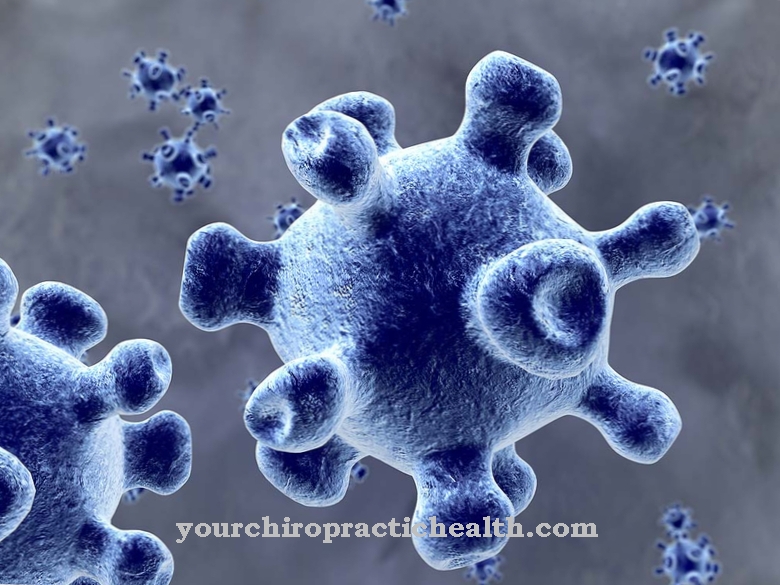

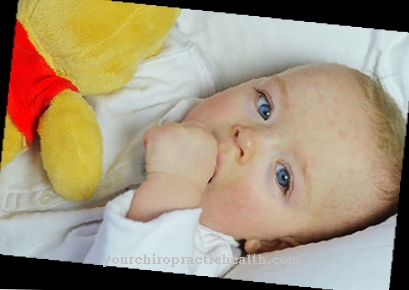


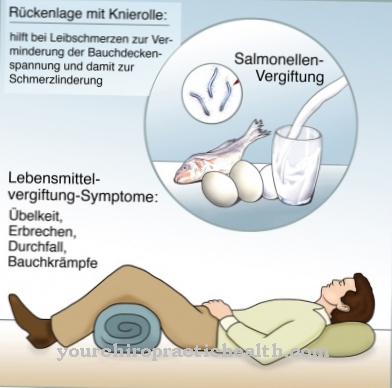






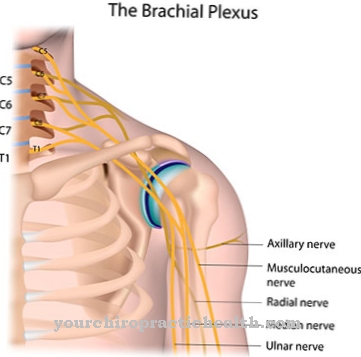




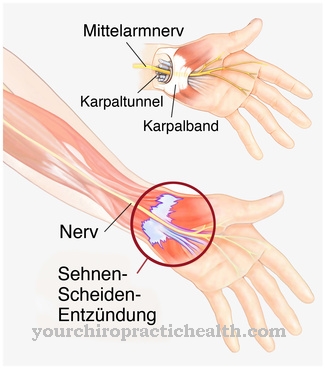


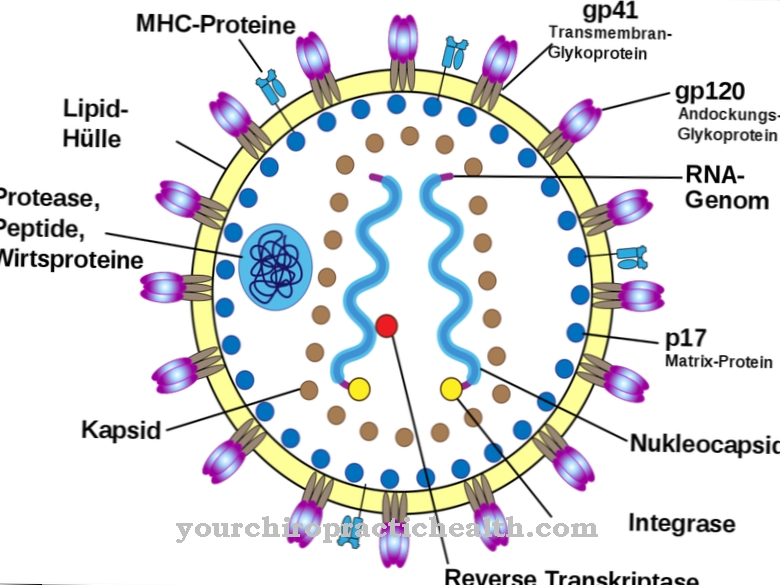
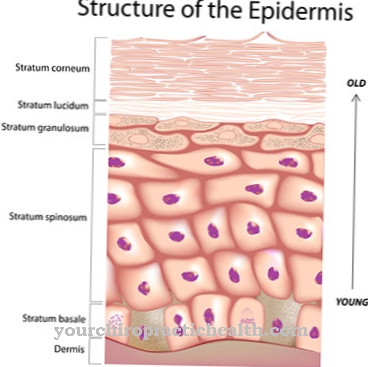
.jpg)

